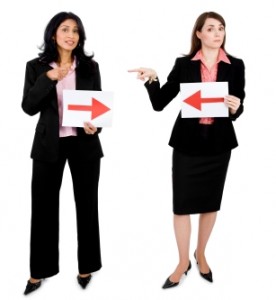Posts tagged ‘Diffusion of Responsibility’
Social Psychology – Helping in Emergencies
Answers the Question
The effect that the number of other people present in an emergency situation has on the willingness of an individual to respond to an emergency.
How it Began
On March 13, 1964, Kitty Genovese was murdered in front of her home. She parked her car a number of feet from her apartment when all of a sudden, a man named Winston Moseley chased her down and stabbed her in the back twice. Due to the excruciating pain, Kitty screamed for help and a neighbour responded shouting at the criminal “Let that girl alone! “Immediately after getting the attention of the criminal, Winston fled the scene and left the girl crawling towards her apartment.
Several witnesses reported to have seen Winston flee the scene with his car and returned ten minutes after the response of one of the neighbours. After seeing his prey lying on the ground almost unconscious, he stabbed the already wounded Kitty Genovese several times more. After this, he stole the money of the victim and sexually assaulted Ms Genovese. A neighbour phoned the police and an ambulance arrived but was too late to help the assaulted Kitty Genovese.
Thirty-eight neighbours of Kitty Genovese were aware that the murder was taking place at the time of the attack and yet all of them chose to do nothing in rescue of the assaulted girl. Why were such apathy, indifference and lack of concern observed from all the neighbours of Kitty?
Two social psychologists, John Darley and Bibb Latané started asking questions as to why the witnesses demonstrated a lack of reaction towards the victim’s need for help.
Key Terminology
The bystander effect – the phenomenon in which the greater the number of people present, the less likely people are to help a person in distress.
Diffusion of responsibility – a sociopsychological phenomenon whereby a person is less likely to take responsibility for action or inaction when others are present.
In Brief
In a series of classic studies, researchers Bibb Latane and John Darley(1) found that the amount of time it takes the participant to take action and seek help varies depending on how many other observers are in the room. In one experiment, subjects were placed in one of three treatment conditions: alone in a room, with two other participants or with two confederates who pretended to be normal participants.
As the participants sat filling out questionnaires, smoke began to fill the room. When participants were alone, 75% reported the smoke to the experimenters. In contrast, just 38% of participants in a room with two other people reported the smoke. In the final group, the two confederates in the experiment noted the smoke and then ignored it, which resulted in only 10% of the participants reporting the smoke.
There are two major factors that contribute to the bystander effect. First, the presence of other people creates a diffusion of responsibility. Because there are other observers, individuals do not feel as much pressure to take action, since the responsibility to take action is thought to be shared among all of those present.
The second reason is the need to behave in correct and socially acceptable ways. When other observers fail to react, individuals often take this as a signal that a response is not needed or not appropriate. Other researchers have found that onlookers are less likely to intervene if the situation is ambiguous.
Group psychology can also influence behaviour positively; in the event that one bystander takes responsibility for the situation and takes specific action, other bystanders are more likely to follow course. This is a positive example of the usually-pejorative herd mentality. Thus, the presence of bystanders affects individual helping behaviour by processes of social influence and diffusion of responsibility.
What does this mean for Organisation Development?
Individually, we have all been taught that taking responsibility for our actions is the right thing to do. However, in today’s business environment, it is often uncommon to work alone. Being with a crowd can make it easy to avoid personal responsibility for taking action. Group inaction conveys the sense to all that the “definition of the situation” is do nothing and don’t get involved.
Group mentality can have a positive effect on team interactions when it comes to sharing success. When projects are successful, most individual team members are more than willing to claim their share of the responsibility. But the bystander effect happens when a group project has stalled or is not successful. The same individuals are less willing to take responsibility in this scenario.
Although it depends on the individual, when you start digging to identify the reasons behind a stalled or unsuccessful project, diffusion of responsibility often comes into play. If one person is asked why a task was not completed, you can often expect to hear, “I thought [so and so] was responsible for that task”.
As a leader, group member and/or an individual, it is important to learn techniques to change this dynamic. One option is to by setting a positive example, other group members will follow suit, resulting in more progress and more shared success. As an role modelling responsibility for your actions regardless of the scenario and highlighting areas of issue will help reduce the impact of the diffusion of responsibility on an .
The good news that Bibb and Latane uncovered was that it takes very little to call bystanders to action. The simple act of asking, ‘What should we do about the smoke? was enough to get people on their feet, opening windows and calling for help. Everyone wanted to do something; they were just waiting for their cue. The same is true when it comes to tackling issues that are highlighted by the diagnostic part of the OD cycle, simply by calling individuals and groups to action is enough to get people moving.


